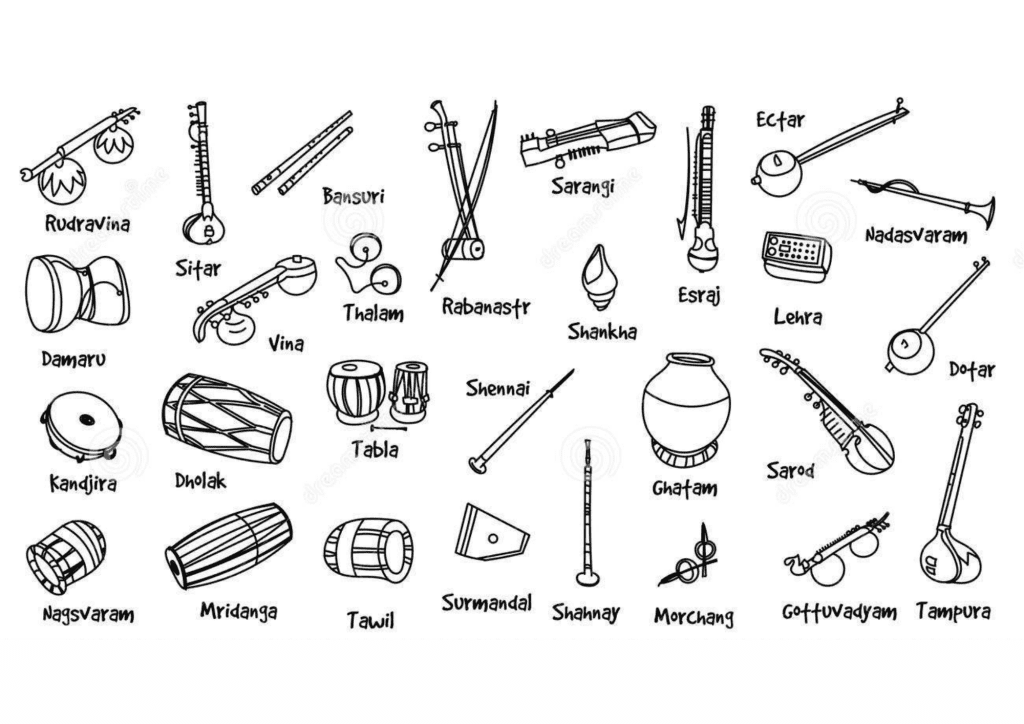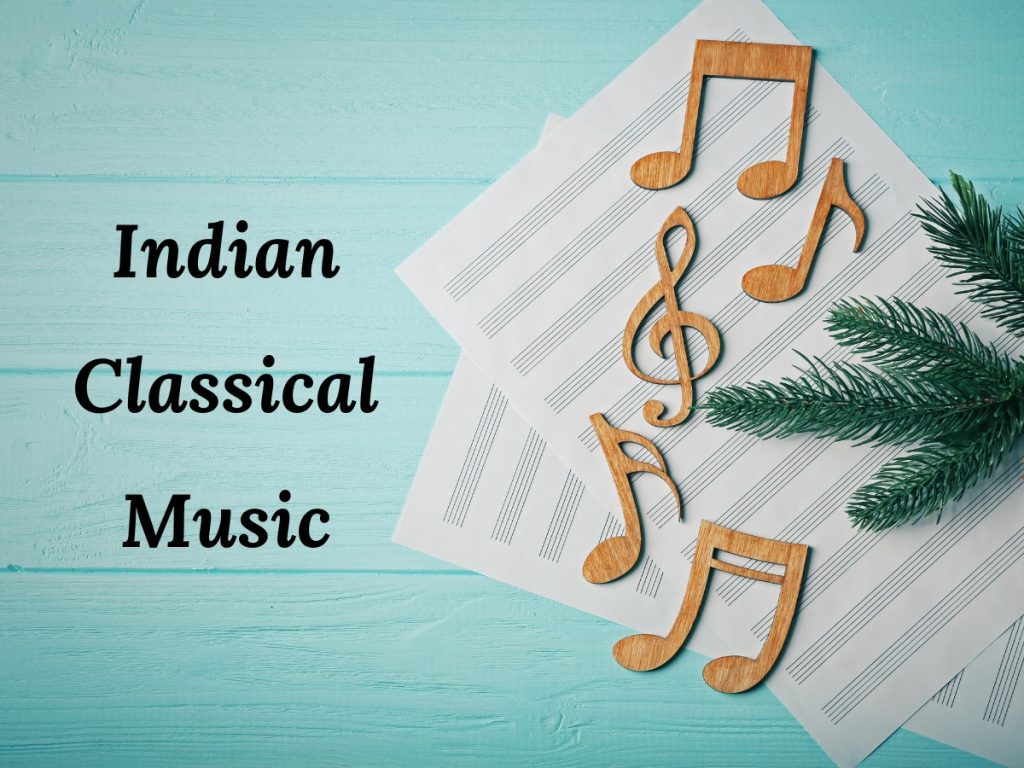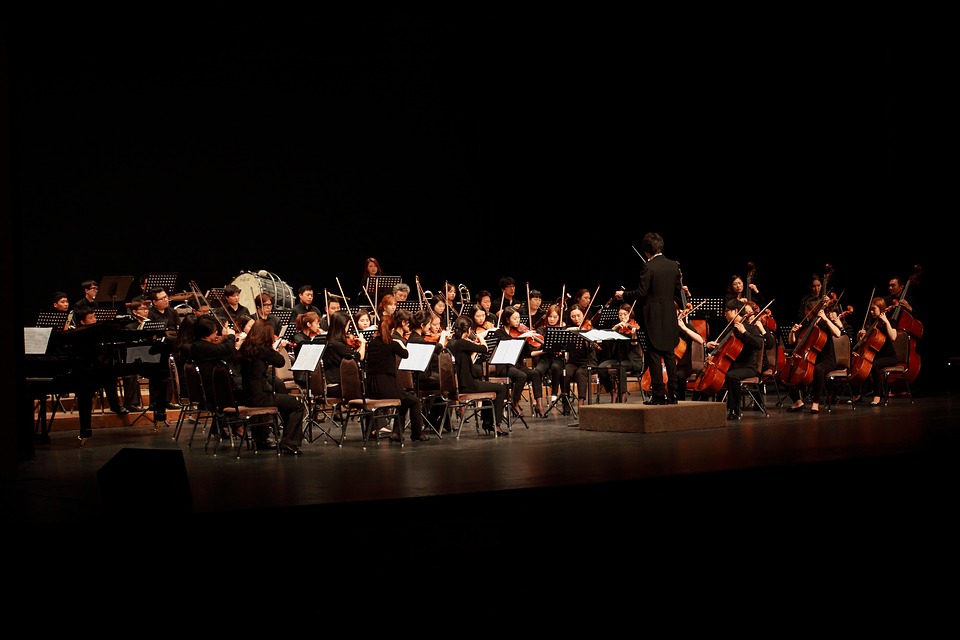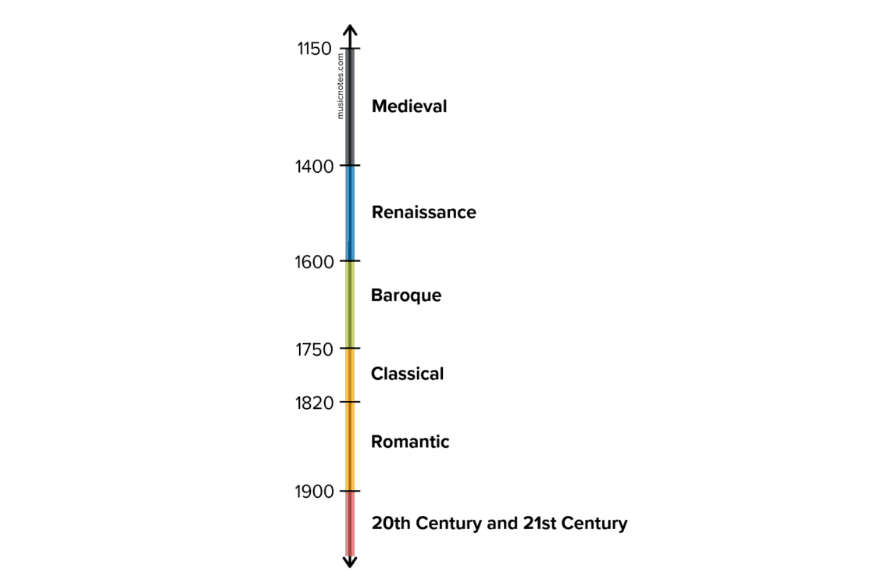Indian classical music is one of the oldest forms of music in the world, with roots traced back more than 2,000 years. It is a unique and complex art form passed down through generations and still thriving today. Since ancient times, music has been an integral part of Indian culture. Indian music has always had a rich and diverse tradition, from devotional songs to folk tunes. And at the heart of it all is classical music. It’s a genre of South Asian music that has its roots in the Vedic traditions of the Indian subcontinent. The use of Raga characterizes the music. Melodic scales provide the foundation for the composition and improvisation of the music. Indian music is often on a drone, a sustained note offering background harmony. The music is built around Tala, which are rhythmic cycles providing the framework for the composition and performance of the music..
The History of Indian Classical Music
Indian classical music traces back to the Vedic period, the earliest Hinduism era. The Vedas are a collection of ancient Hindu scriptures that contain hymns, prayers, and rituals. The priests sang these hymns and prayers, often accompanied by music. The concept of Raga was first introduced in the Vedic period. A raga is a melodic framework. To create a piece of music, a musician should know Raga. It typically consists of a scale, a set of notes, and rules.
The earliest Indian music was probably monophonic, consisting of a single melody. As Indian music evolved, it incorporated more complex harmonies and rhythms. Polyphonic music, which consists of multiple pieces played simultaneously, became more common.
In the 12th century, The great Indian musician and poet Amir Khusro developed a new style of music called qawwali. Qawwali is a form of devotional music still popular today in India. In the 16th century, the Mughal emperor Akbar patronized a new style of music called dhrupad. Dhrupad is a form of Hindustani classical music. You can recognize it by its slow tempo and emphasis on melody. The late 18th and early 19th centuries saw the rise of the khyal.
At the end of the 19th century, Indian music was influenced by Western classical music, particularly the works of Bach, Beethoven, and Mozart. Indian musicians began to experiment with Western scales, harmonies, and rhythms. Today, our music is performed all over the world. It is a popular genre of music in India and has a growing following in the West.
In the 20th century, Indian classical music began to receive international recognition, with musicians such as Ravi Shankar and Ali Akbar Khan introducing it to audiences worldwide—many talented musicians carrying on their rich legacy.
The Different Styles
Indian classical music has two main traditions. One is the North Indian tradition or Hindustani music, and the other is the South Indian tradition or Carnatic music. It encompasses a wide range of styles and genres, each with its unique characteristics and history. The different types are-
- Hindustani classical music – The music of North India
- Carnatic classical music – The music of South India
- Rabindra Sangeet – The theme of Bengal
The type of instrumentation, improvisation, and musical tone distinguishes the different styles. It is characterized by different styles developed over the years, each with its tradition, technique, and repertoire.
Many Indian films and international films use this music. They are used in Indian films like Guide, Pakeezah, Mughal-E-Azam, Aurat, and many others. International films like The Bengali Night, The Darjeeling Limited, The Namesake, Slumdog Millionaire, and many others. Also used in Sufi music, like Qawwali, Sufiana Kalam, and many different forms of Sufi music. Also present in devotional music like Bhajans and many other states.
Indian Classical Instruments

Indian classical music has a wide variety of instruments. Each has its unique sound and character. Here are some of the most popular and widely used instruments-
- Sitar: The sitar produces a deep, resonant sound, and Hindustani classical musicians commonly use it. It has a long neck and pear-shaped body, which makes it an iconic Indian classical instrument.
- Tabla: Musicians use the tabla widely as a pair of hand drums. The tabla has a smaller drum, the Dayan, and a giant bayan drum. It has excellent versatility and can produce a wide range of sounds.
- Sarod: The sarod is a string instrument with a deep and rich tone. Musicians play it with a pick, known as a Mezrab.
- Flute: Musicians use the bamboo Indian flute widely in Hindustani and Carnatic classical music. It produces a haunting, melodic sound when players blow air across the instrument’s top.
- Violin: The violin is a Western classical instrument. Musicians adapted this instrument for its bright, crisp sound. It is widely used in the Carnatic style of classical music.
- Shehnai: The shehnai is a traditional Indian wind instrument. It is commonly used at weddings and other auspicious occasions. It has a bright, piercing sound and can create a festive atmosphere.
- Harmonium: The harmonium is a keyboard instrument. It was introduced to India during the British colonial era. It has since become an integral part of Indian classical music. Vocalists commonly use this instrument.
These are just a few of the many instruments. There are many others also. Each instrument has its own unique sound and playing style, and together they create the rich, vibrant tapestry that is Indian classical music.
Great Masters
Certainly! Indian classical music has produced some of the most remarkable and influential musicians ever. Here are a few great masters of Indian classical music, known for their exceptional skill and immense contribution to the art form:
Tansen: A musician in the court of Mughal Emperor Akbar. Tansen is one of the most excellent musicians of all time in India. He was a virtuoso composer and performer renowned for his unmatched dhrupad and raga music skills.
Amir Khusro: Amir Khusro was a multi-talented 13th-century musician, poet, and scholar. He has credit for creating the genre of Sufi music.
Pandit Ravi Shankar: Pandit Ravi Shankar is undoubtedly one of the most iconic Indian classical musicians of modern times. As a sitar virtuoso and composer, he played a pivotal role in popularizing Indian classical music in the West.
Ustad Allauddin Khan: Ustad Allauddin Khan was a legendary musician and composer. He is the founder of the Maihar Gharana. He was a master of several instruments, including the sarod and the surbahar.
Pandit Bhimsen Joshi: Pandit Bhimsen Joshi was a renowned Indian classical vocalist. He belongs to the Kirana Gharana. He is one of the greatest singers of all time in India.
These great masters of Indian classical music have left an indelible mark on the genre, shaping its history and evolution. Their extraordinary talent and vision continue to inspire countless musicians and music lovers, making them an inseparable part of the rich cultural heritage of India.
Characteristics of Indian Classical Music
Indian classical music requires performers to undergo years of training and practice to master its improvisation, complex melodies, and intricate rhythms in a highly disciplined and structured process.
Performers of Indian classical music use ragas, melodic frameworks that guide their improvisation. When playing a raga, the performer follows specific rules and conventions. Because each raga is associated with a particular mood or emotion.
Indian classical music creates rhythms through the interplay of various percussion instruments, such as the Tabla and Mridangam. These instruments produce complex rhythmic cycles that enhance the music’s beauty and complexity.
Mastering Indian classical music demands dedication, discipline, and practice. Ragas and percussion instruments are crucial to this music, contributing to its improvisation, complex melodies, and intricate rhythms. That’s why it is a unique and fascinating art form.
The Importance of Indian Classical Music in Indian Culture
For centuries, Indian classical music has played a significant role in Indian culture. It has been integral to religious ceremonies, festivals, and other cultural events. Music schools and universities nationwide actively teach and practice Indian classical music.
Indian classical music is not solely for entertainment but also serves as a means of connecting with the divine. Many ragas used in Indian classical music have associations with Hindu deities. People believe that these ragas possess spiritual power. Spiritual music can transport the listener to a higher realm.
Indian classical music has profoundly impacted Indian culture. It is more than just entertainment and has value for its ability to connect listeners. Music schools and universities throughout India widely practice and teach Indian classical music, highlighting its significant importance.
FB Page: Classical Beast



